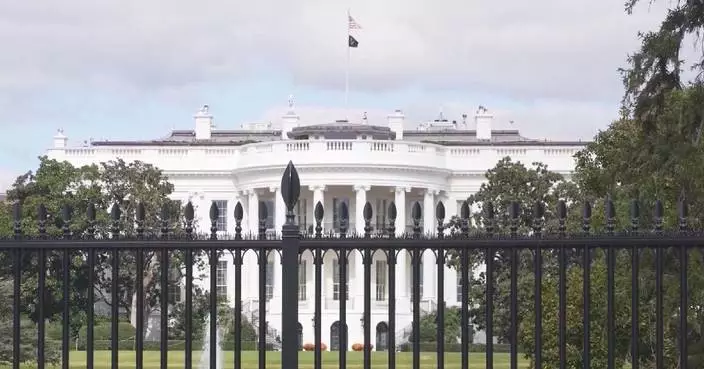NEW ORLEANS (AP) — A civil rights lawsuit alleging a south Louisiana parish engaged in racist land-use policies by placing polluting industries in majority-Black communities can move forward, a federal appellate court says.
On Thursday, the 5th U.S. Circuit Court of Appeals in New Orleans ruled that a trio of faith-based community groups could proceed with a lawsuit alleging racial discrimination in the petrochemical buildout in St. James Parish, a region in the heart of Louisiana's heavily industrialized Chemical Corridor. It is often referred to by environmental groups as “Cancer Alley” for its high levels of pollution.
The lawsuit calls for a moratorium on the construction and expansion of petrochemical plants in St. James Parish. When the lawsuit was filed in March 2023, 20 of the 24 industrial facilities were in two sections of the parish with majority-Black populations.
The U.S. Environmental Protection Agency found in a 2003 report that St. James Parish ranked higher than the national average for certain cancer deaths. Both majority-Black sections of the parish are ranked as having a high risk of cancer from toxic pollutants according to an EPA screening tool based on emissions reported by nearby facilities, the lawsuit notes.
"We have been sounding the alarm for far too long that a moratorium is needed to halt the expansion of any more polluting industries in our neighborhoods, and too many lives have been lost to cancer,” said Gail LeBoeuf, a lifelong parish resident and co-founder of Inclusive Louisiana. She is a plaintiff in the case.
The case will now go back to the U.S. District Court in the Eastern District of Louisiana, which had previously ruled the lawsuit was filed too late by Inclusive Louisiana and other community groups because the allegations centered on a 2014 parish land-use plan.
But the federal court said the complaint was filed on time and noted that the lawsuit was “replete with allegations of discriminatory land use decisions” in the parish, of which the 2014 plan was just one example.
The court also recognized that the groups had a right to sue the parish for authorizing industrial development which “desecrates, destroys, and restricts access” to the cemeteries of their enslaved ancestors in the parish. Many of the petrochemical facilities in Louisiana are built on former plantations, and few of the burial sites of the enslaved have been preserved.
“I think it’s a real vindication of their struggle," said Pamela Spees, a lawyer with the Center of Constitutional Rights representing the plaintiffs. “This is a case about long-running ongoing discrimination and now we get to deal with the claims on their merits.”
St. James Parish did not immediately respond to a request for comment.
—
Brook is a corps member for The Associated Press/Report for America Statehouse News Initiative. Report for America is a nonprofit national service program that places journalists in local newsrooms to report on undercovered issues.
Follow Brook on the social platform X: @jack_brook96.
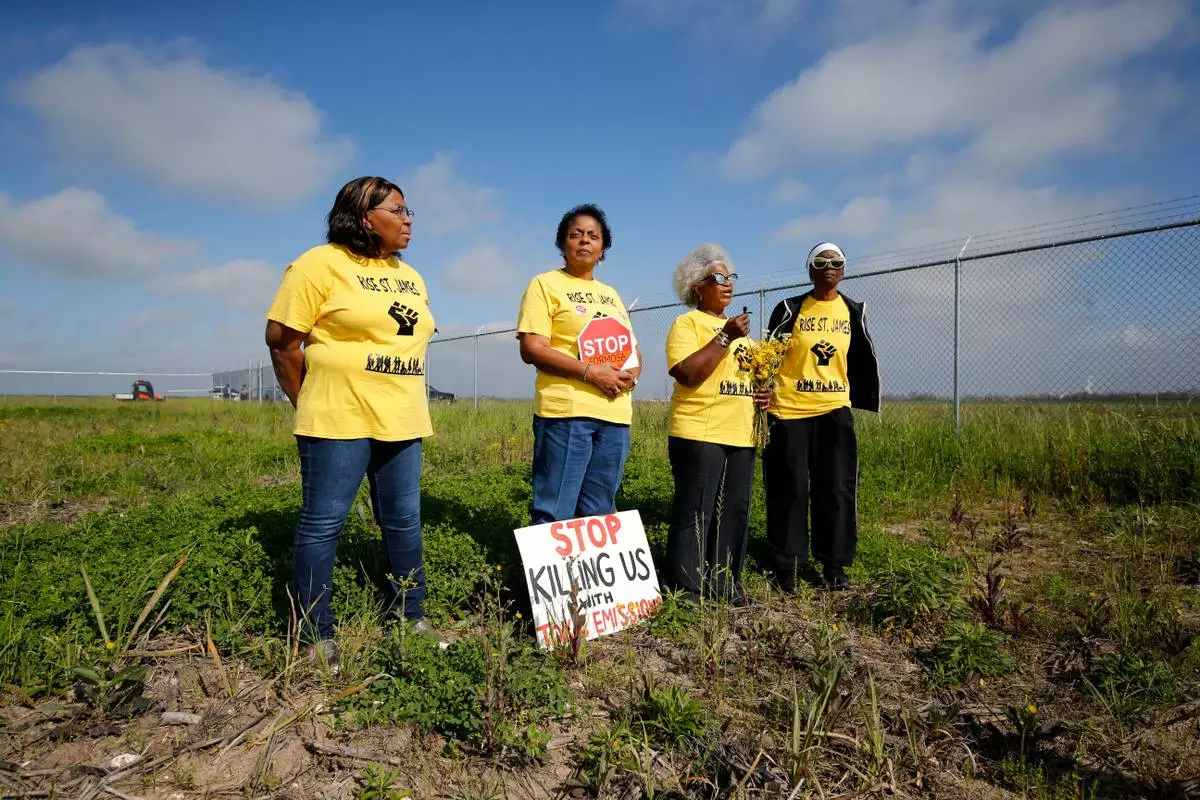
FILE - Myrtle Felton, from left, Sharon Lavigne, Gail LeBoeuf and Rita Cooper, members of RISE St. James, conduct a live stream video on property owned by Formosa on March 11, 2020, in St. James Parish, La. (AP Photo/Gerald Herbert, File)
Wall Street extended its gains to a ninth straight day Friday, marking the stock market’s longest winning streak since 2004 and reclaiming the ground it lost since President Donald Trump escalated his trade war in early April.
The rally was spurred by a better-than-expected report on the U.S. job market and resurgent hope for a ratcheting down in the U.S. trade showdown with China.
The S&P 500 climbed 1.5%. The Dow Jones Industrial Average added 1.4%, and the Nasdaq composite rose 1.5%.
The gains were broad. Roughly 90% of stocks and every sector in the S&P 500 advanced. Technology stocks were among the companies doing the heaviest lifting. Microsoft rose 2.3% and Nvidia rose 2.5%. Apple, however, fell 3.7% after the iPhone maker estimated that tariffs will cost it $900 million.
Banks and other financial companies also made solid gains. JPMorgan Chase rose 2.3% and Visa closed 1.5% higher.
Employers added 177,000 jobs in April. That marks a slowdown in hiring from March, but it was solidly better than economists anticipated. However, the latest job figures don’t yet reflect the effects on the economy of President Donald Trump’s across-the-board tariffs against America’s trading partners. Many of the more severe tariffs that were supposed to go into effect in April were delayed by three months, with the notable exception of tariffs against China.
“We’ve already seen how financial markets will react if the administration moves forward with their initial tariff plan, so unless they take a different tack in July when the 90-day pause expires, we will see market action similar to the first week of April,” said Chris Zaccarelli, chief investment officer for Northlight Asset Management.
The S&P 500 slumped 9.1% during the first week of April as Trump announced a major escalation of his trade war with more tariffs. The market has now clawed back its losses since then, helped by a string of resilient earnings reports from U.S. companies, hopes for de-escalation of trade tensions with China and expectations that the Federal Reserve will still be able to cut rates a few times this year.
The benchmark index is still down 3.3% so far this year, and 7.4% below the record it reached in February.
All told, the S&P 500 rose 82.53 points to 5,686.67. The Dow gained 564.47 points to 41,317.43, and the Nasdaq added 266.99 points to 17,977.73.
The job market is being closely watched for signs of stress amid trade war tensions. Strong employment has helped fuel solid consumer spending and economic growth over the last few years. Economists are now worried about the impact that taxes on imports will have on consumers and businesses, especially about how higher costs will hurt hiring and spending.
The economy is already showing signs of strain. The U.S. economy shrank at a 0.3% annual pace during the first quarter of the year. It was slowed by a surge in imports as businesses tried to get ahead of Trump’s tariffs.
The current round of tariffs and the on-again-off-again nature of Trump’s policy has overshadowed planning for businesses and households. Companies have been cutting and withdrawing financial forecasts because of the uncertainty over how much tariffs will cost them and how much they will squeeze consumers and sap spending.
Hopes remain that Trump will roll back some of his tariffs after negotiating trade deals with other countries. China has been a key target, with tariffs of 145%. Its Commerce Ministry said Beijing is evaluating overtures from the U.S. regarding the tariffs.
Investors had a relatively quiet day of earnings reports following a busy week. Exxon Mobil rose 0.4%, recovering from an early slide, after reporting its lowest first-quarter profit in years. Rival Chevron rose 1.6% after it also reported its smallest first-quarter profit in years.
Falling crude oil prices have weighed on the sector. Crude oil prices in the U.S. are down about 17% for the year. They fell below $60 per barrel this week, which is a level at which many producers can no longer turn a profit.
Block slumped 20.4% after reporting a sharp drop in first-quarter profit that fell short of analysts' forecasts. The financial technology company behind Cash App cited a pullback in consumer spending on travel and other discretionary items as a key reason for the results.
Treasury yields rose in the bond market. The yield on the 10-year Treasury rose to 4.31% from 4.22% late Thursday.
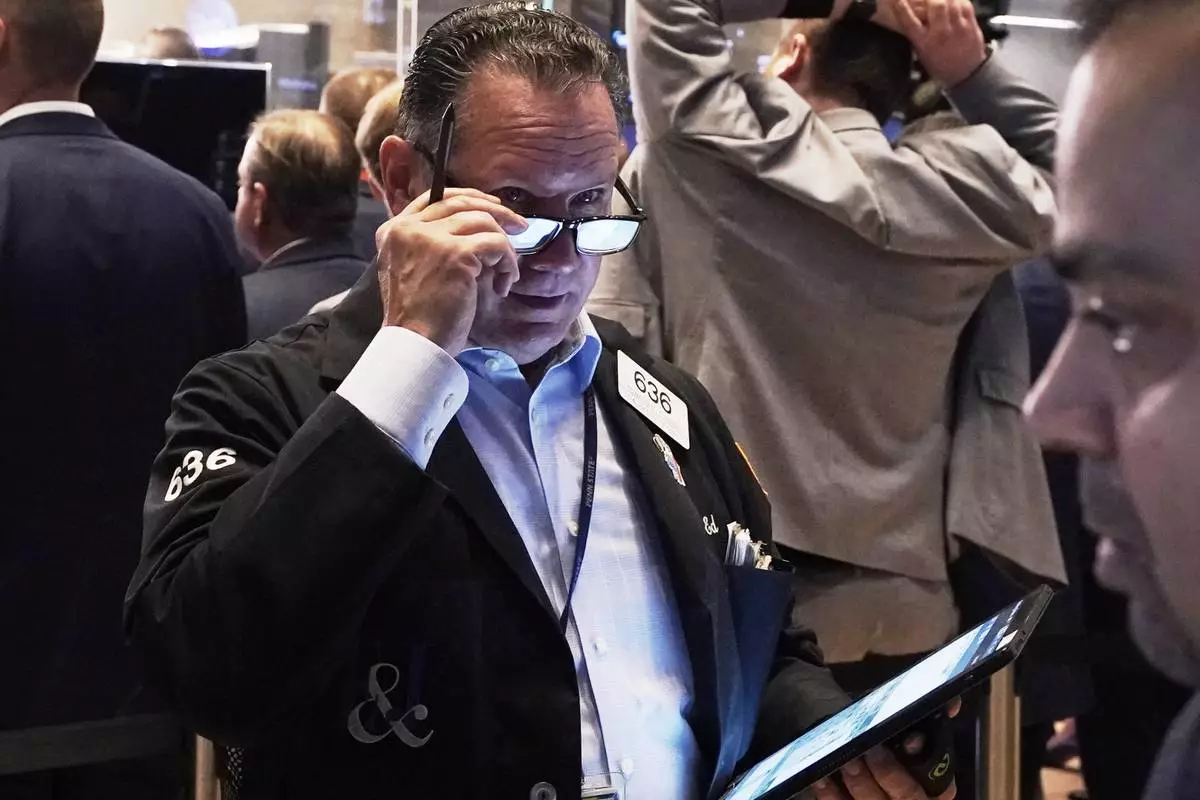
Trader Edward Curran works on the floor of the New York Stock Exchange, Friday, May 2, 2025. (AP Photo/Richard Drew)
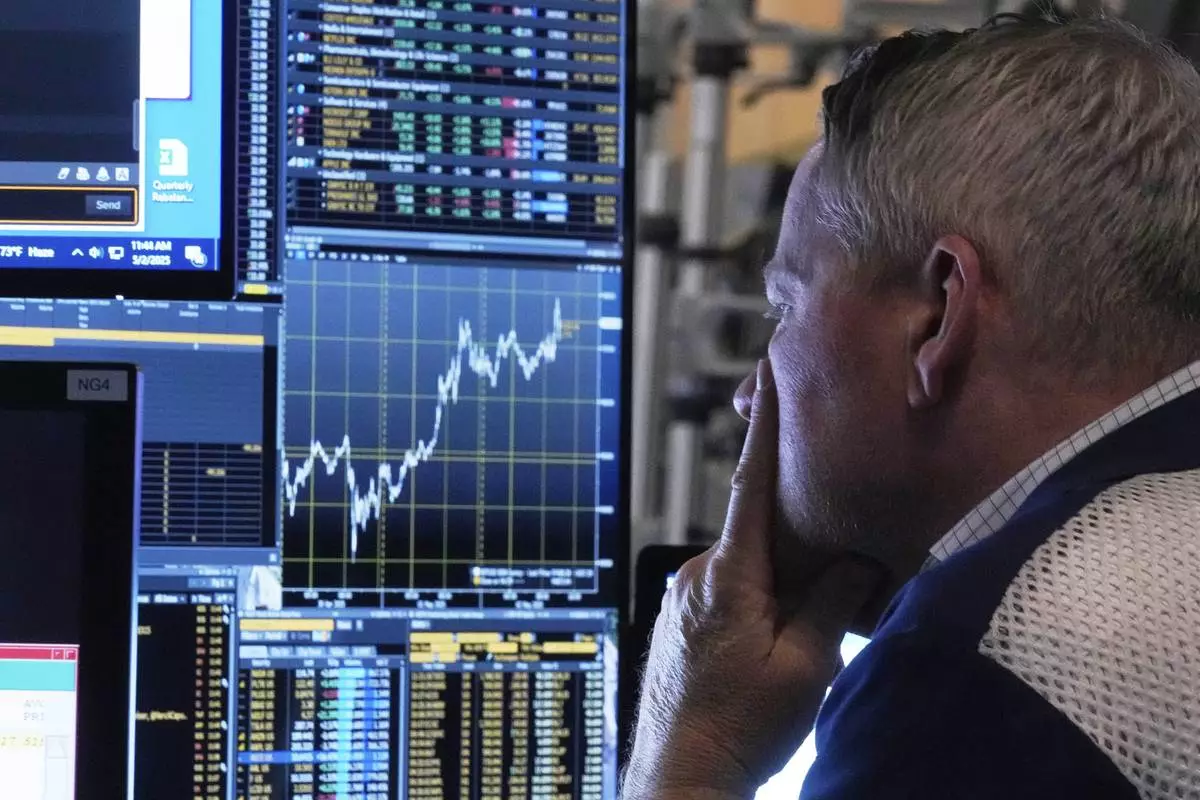
Trader Rob Taylor works on the floor of the New York Stock Exchange, Friday, May 2, 2025. (AP Photo/Richard Drew)
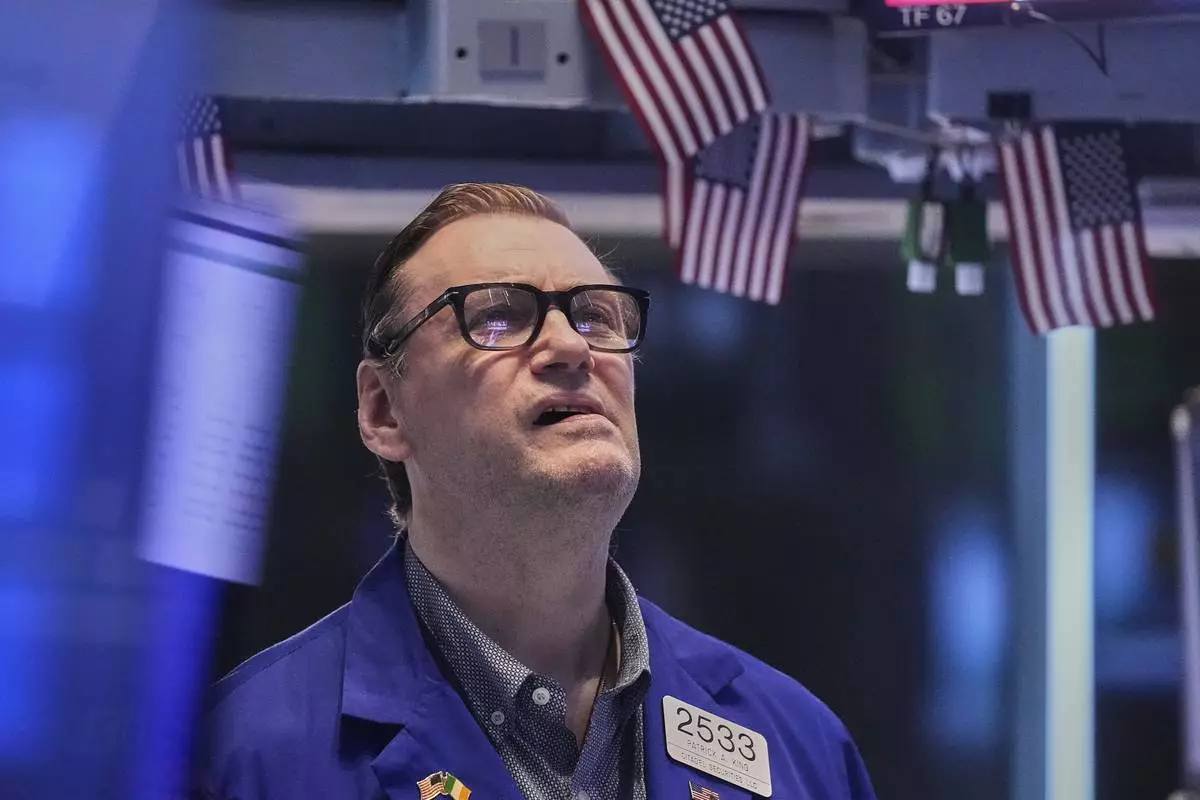
Specialist Patrick King works on the floor of the New York Stock Exchange, Friday, May 2, 2025. (AP Photo/Richard Drew)
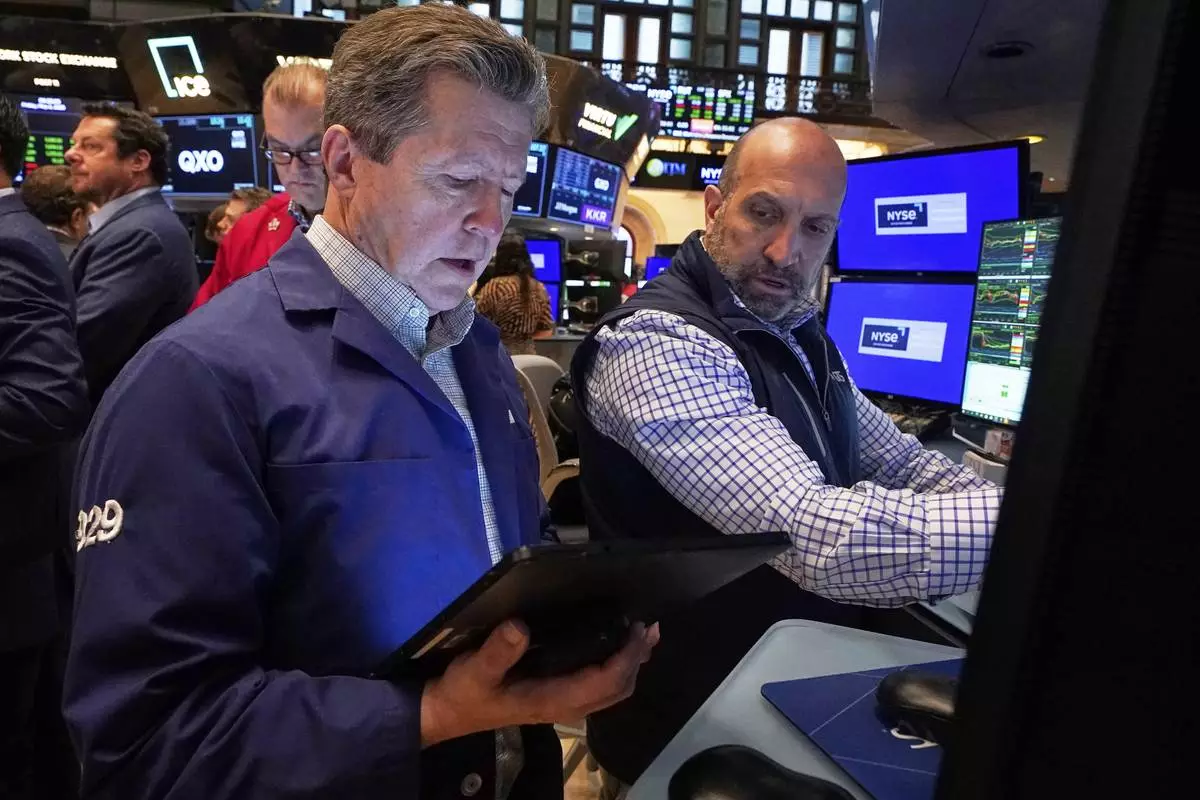
Trader James Matthews, left, and specialist James Denaro work on the floor of the New York Stock Exchange, Friday, May 2, 2025. (AP Photo/Richard Drew)

Specialist Glenn Carell, left, and trader Mathias Roberts, center, work on the floor of the New York Stock Exchange, Friday, May 2, 2025. (AP Photo/Richard Drew)
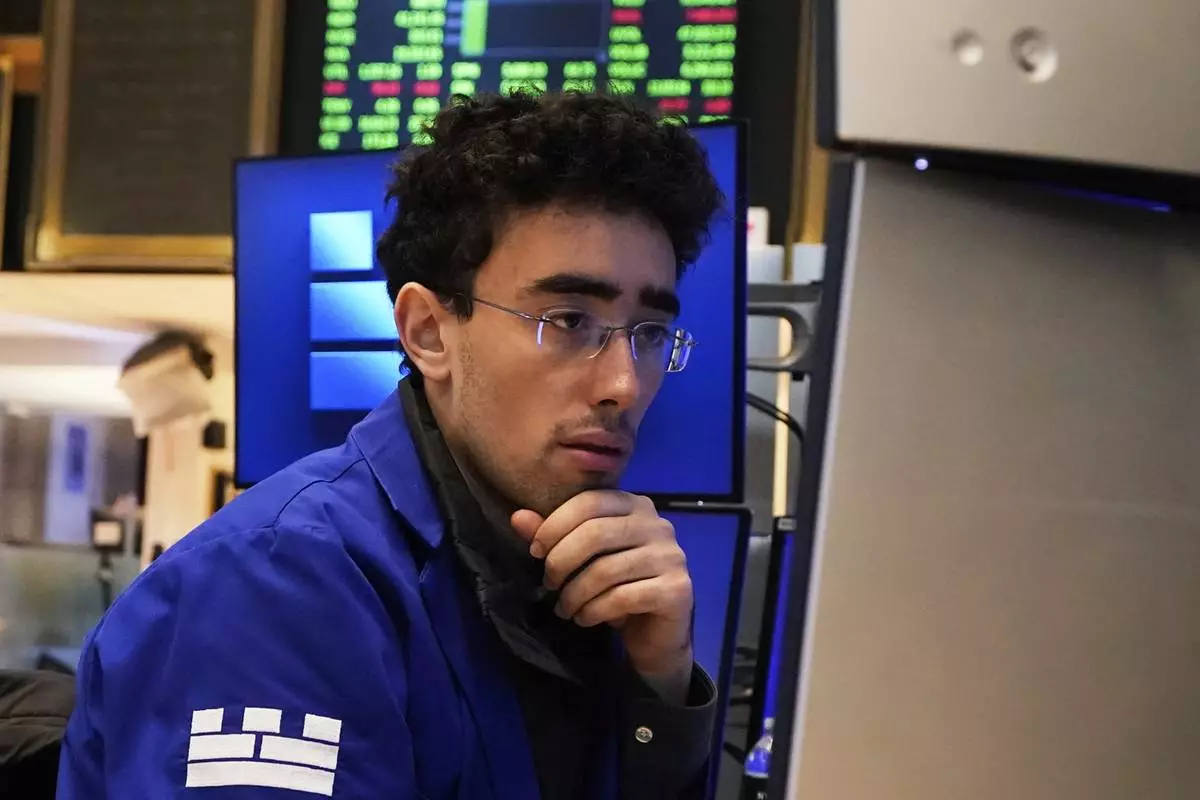
Specialist Alex Weitzman works at his post on the floor of the New York Stock Exchange, Friday, May 2, 2025. (AP Photo/Richard Drew)
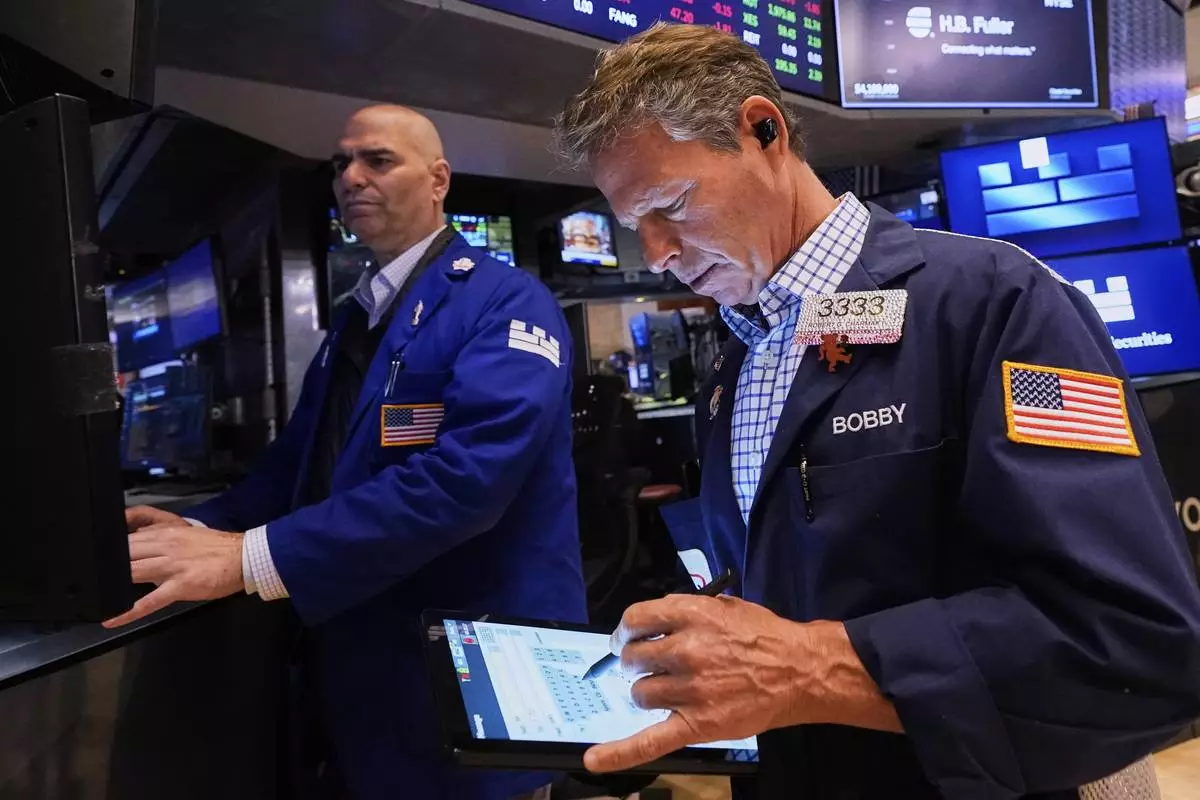
Specialist Philip Finale, left, and trader Robert Charmak work on the floor of the New York Stock Exchange, Friday, May 2, 2025. (AP Photo/Richard Drew)
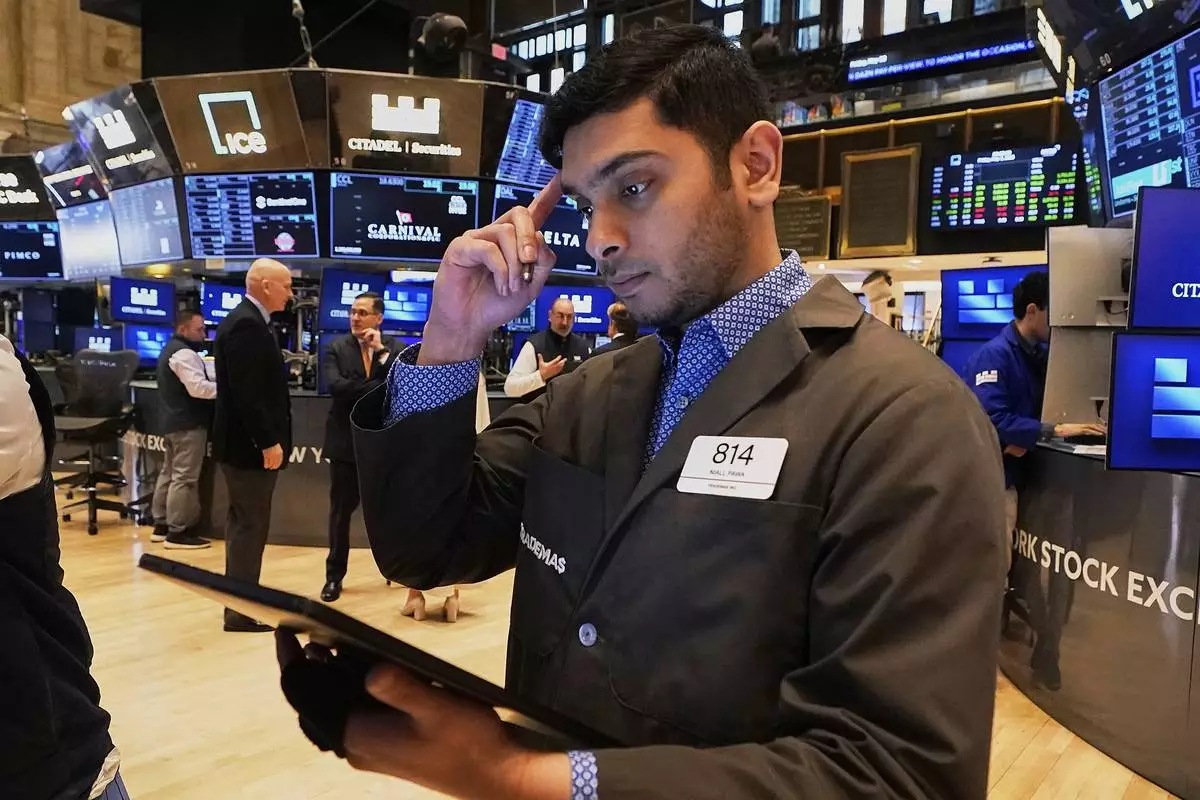
Trader Niall Pawa works on the floor of the New York Stock Exchange, Friday, May 2, 2025. (AP Photo/Richard Drew)
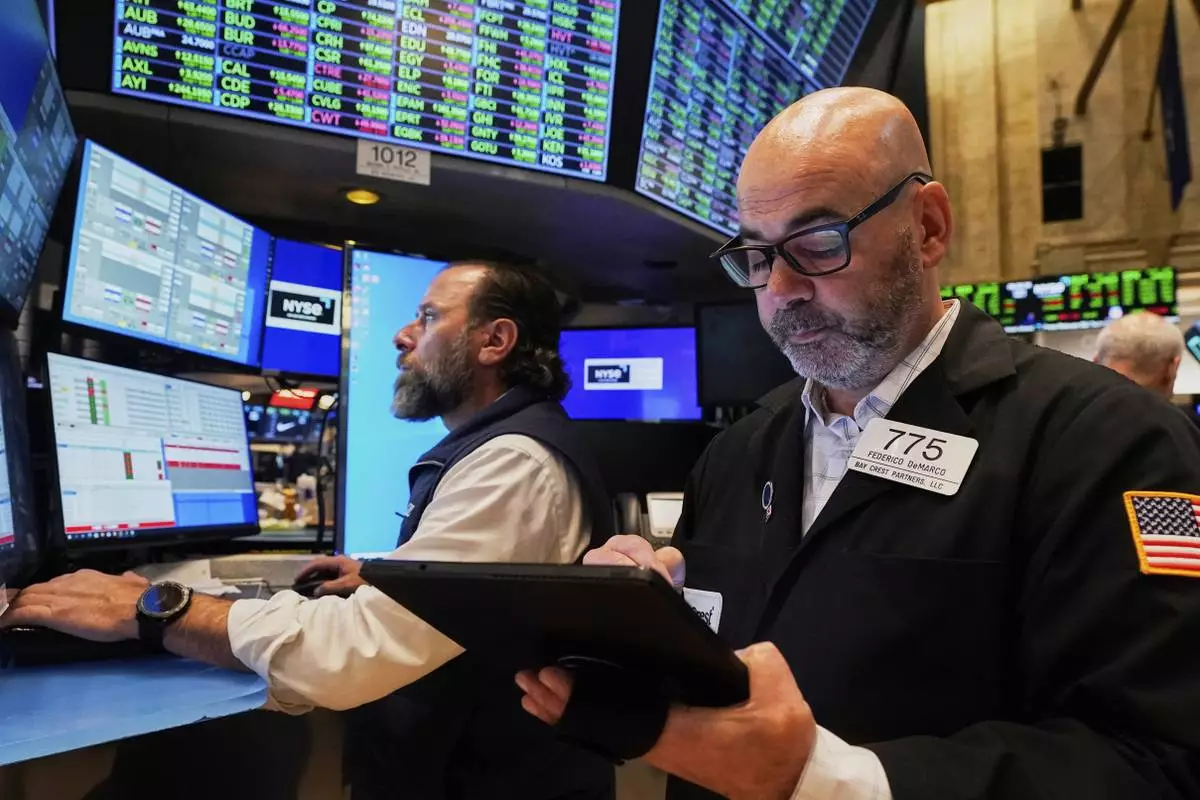
Specialist Michael Pistillo, left, and trader Fred Demarco work on the floor of the New York Stock Exchange, Friday, May 2, 2025. (AP Photo/Richard Drew)
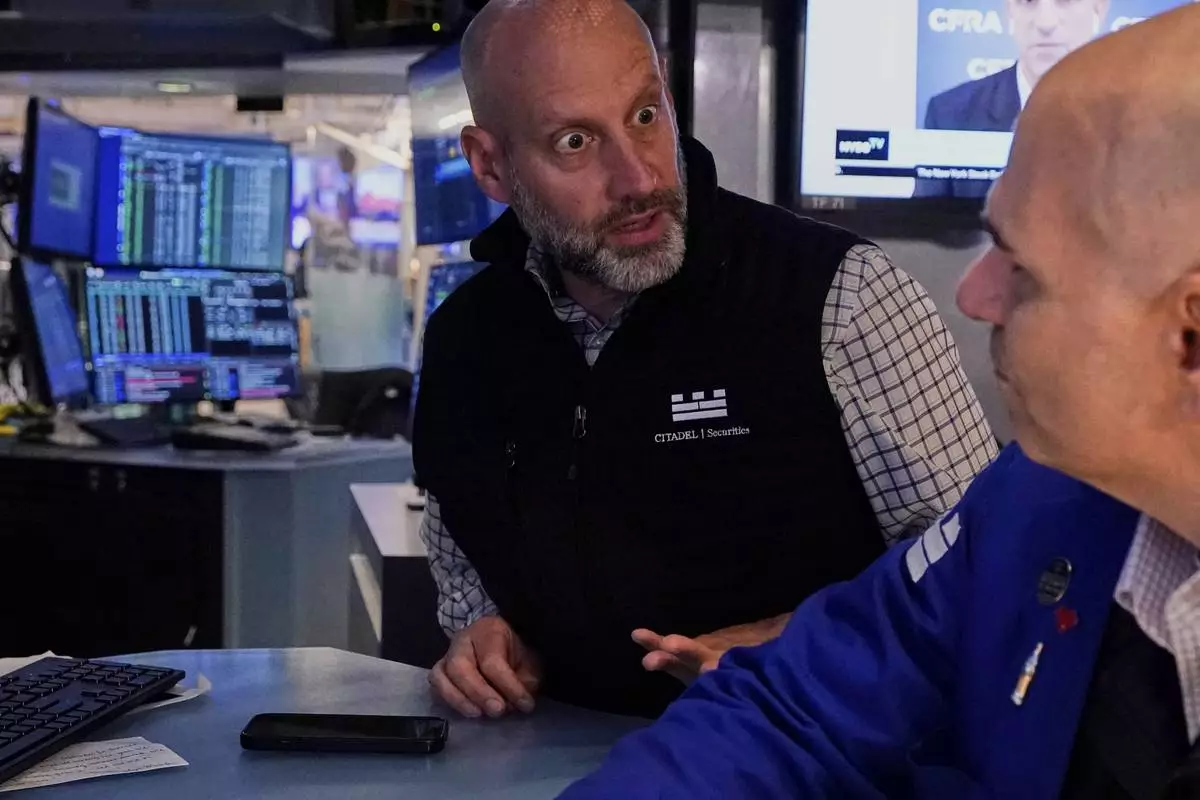
Specialists Meric Greenbaum, left, and Philip Finale confer on the floor of the New York Stock Exchange, Friday, May 2, 2025. (AP Photo/Richard Drew)

Specialist James Denaro works at his post on the floor of the New York Stock Exchange, Thursday, May 1, 2025. (AP Photo/Richard Drew)
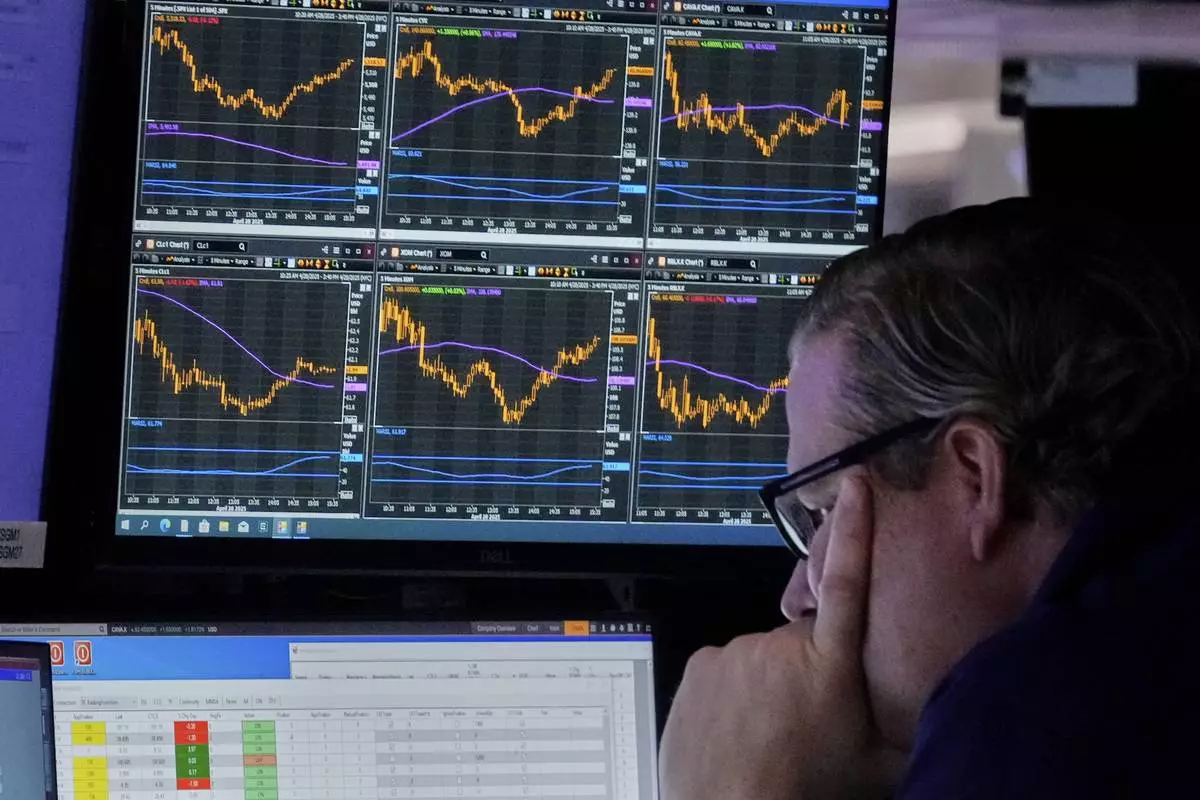
Specialist Gregg Maloney works at his post on the floor of the New York Stock Exchange, Monday, April 28, 2025. (AP Photo/Richard Drew)



































